Types Of Velvet Fabrics, Velvet Fabric Uses And Applications
Jump To:
Almost everyone is pretty well aware of the fact of how soft and luxurious velvet is. Wearing it makes people feel rich yet smooth. The fabric velvet was initially only for the nobility and royalty. It was pretty expensive, and hence many were unable to afford it. But now things have changed since various blends of fabric for the creation of velvet are very common. It is a high-end fabric that has a good drape and looks very regal. Velvet fabric uses in upholstery and drapes is prevalent as well. But many people are still unaware of the different types of velvet fabric that they can use and afford. Check out the types of fabrics.
So, therefore, in this article, we will discuss the various velvet fabric types and their different textures. There are various kinds of velvet fabrics, and many are not aware of them. Here we have incorporated a few of those types that are pretty famous as well. Take a look.
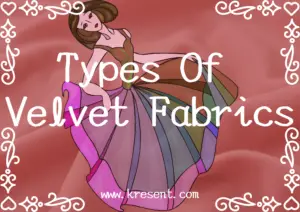
Crushed velvet
The crushed velvet has a unique texture. Its feel is very different and soft. They have a patterned look and are pretty shiny. Living up to its name, the crushed velvet gives off a crushed look.
The twisting of the fabric, while it’s wet, helps it to achieve this look. Another way to achieve crushed velvet is by pressing a pile of velvet fabric in different directions.
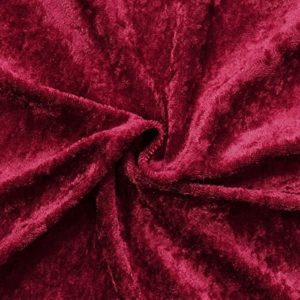
Stretch velvet
Stretch velvet refers to a soft and comfortable type of velvet fabric. It is a smooth fabric and is quite stretchy as well. The stretch occurs due to the presence of spandex in the material.
The weave contains a mixture of 90% polyester and 10% spandex making it flexible and stretchy. This fabric is comfortable, form-fitting, and one can even wash it in the machine. The stretch velvet is easier to work with, and one must use stretch needles and stretch stitches to sew this fabric.
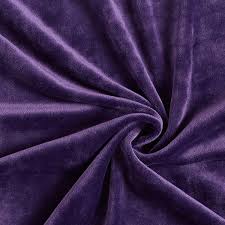
Panne velvet
The panne velvet is a special kind of crushed velvet. People apply heavy pressure on the fabric to create its unique look. The heavy pressure pushes the material in a particular direction giving it a crushed look.
People, though very frequently, refer to this fabric as paon velvet as well. The panne velvet has a minimal amount of stretch as well, and that is because it contains elastane. The base of this velvet is either woven or knitted.
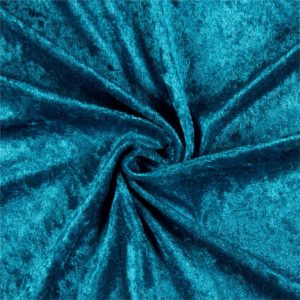
Pile on pile velvet
The pile on pile velvet is a type of velvet that has varying heights of the pile, either cut or uncut, for creating different patterns. This is a very luxurious velvet, and people also refer to it as double velvet.
The technique for preparing this velvet is unique and is also considered one of the oldest techniques.
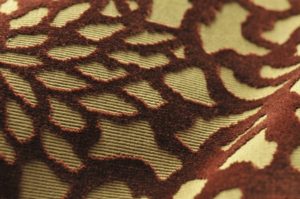
Embossed velvet
The embossed velvet refers to a type of fabric in which a heat stamp for printing is done. The heat stamp applies pressure to the velvet and creates a pattern by pushing the pile of fabric down.
Available in velvet upholstery, people use this fabric for home designing and d cor. The embossed velvet is sophisticated, and people usually wear it as evening wear.
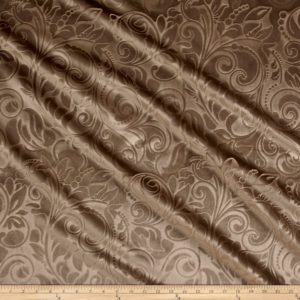
Ciselé velvet
The chisel velvet refers to a patterned velvet. One can create the pattern of this velvet by cutting the threads that are in the loop and leaving the others. Therefore, this velvet fabric will have some flat sections, while there will also be some sections that will have a rise.
For upholstery on wall tapestries and furniture, the use of this velvet fabric is every day.
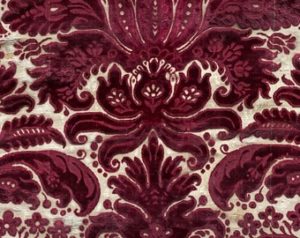
Velveteen
The pile of velveteen is relatively short and dense. The piles of this fabric are actually from the horizontal weft threads instead of the vertical waft threads. It is pure cotton and consists of a considerable amount of body but lesser drapes.
If one compares velveteen with standard velvet, then the shine and softness of velvet will be much higher. Velveteen is heat resistant and is very matte and heavy.
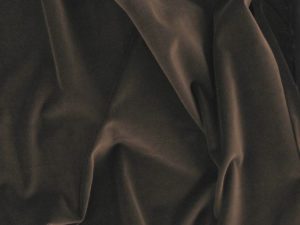
Plain velvet
Plain velvet refers to a velvet whose construction is made of cotton. It is pretty heavy and has an extremely minimal amount of stretch. The stretch is so less that it is equal to nothing as well.
The plain velvet is devoid of the usual velvet shine since cotton is used for its construction, while others use synthetic fibres or silk fibres. This velvet fabric is heavy, but sewing is also easier since it is not as slippery as the others.
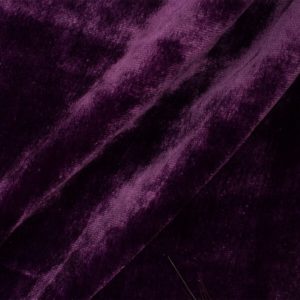
Italian velvet
The Italian velvet refers to a type of fabric that is very delicate. The combination of viscose and silk is done for the preparation of this particular velvet fabric. It is a symbol of preciousness and luxury.
The Italian velvet creates a dense pile that is soft as well. The pile is very shimmery, and people use it for preparing sleek dresses, gowns, and chic clothing.
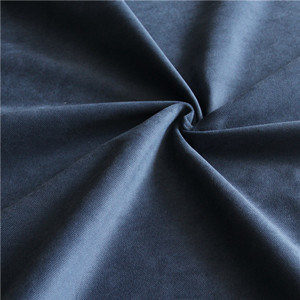
Silk velvet
The silk velvet is very soft, precious, and luminous. The weaving process for this velvet is very sophisticated as well. It is a smooth and luxurious fabric and can also be embossed.
The silk velvet is very difficult to work with since it is a fluid fabric. Nonetheless, the finishing is excellent for this specific velvet fabric.
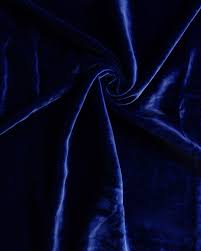
Viscose velvet
The viscose velvet is a fabric with a good texture and also has delightful skin. It is perfect for trendy and cool interiors like pillows, table covers, etc. This velvet fabric is vibrant, and people also use it for manufacturing gloves, handbags, etc.
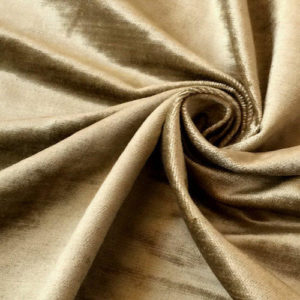
Hammered velvet
The hammered velvet is a very lustrous velvet fabric that has a crushed pattern. The material gives off a mottled look and uses the technique of hammering. The method creates the dappled and crushed texture of this specific velvet fabric.
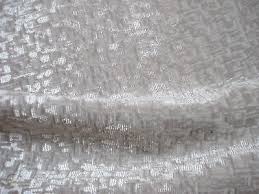
Rayon velvet
The rayon velvet refers to a smooth and soft velvet fabric. It resembles a silk velvet fabric since the large drape amount is common in both. But despite reaching the silk velvet fabric, the rayon velvet does not shine as much as the silk fabric.
It is much more affordable, and people also love this. While using, one must remember that ironing the rayon velvet fabric may ruin it and hence one should only dry clean it.
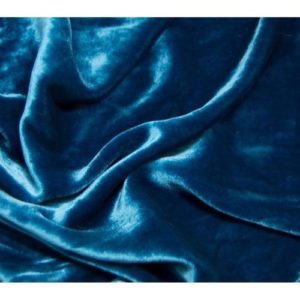
Velvet is a very wonderful fabric and is very royal. With time, it has become more and more affordable and widespread. Knowing about the different velvet fabrics allows an individual to choose the right one while buying as well.
But one must make sure to keep their velvet properly since maintaining them can be a tough job. Bleaching, washing in a machine, and squeezing to take out excess water are things one should avoid if one is using velvet.
What kind of fabric is velvet?
velvet, in textiles, fabric having a short, dense pile, used in clothing and upholstery. The term derives from the Middle French velu, “shaggy.” Velvet is made in the pile weave, of silk, cotton, or synthetic fibres, and is characterized by a soft, downy surface formed by clipped yarns.
What is stretchy velvet called?
Panne velvet is a type of crushed velvet where the pile has been flattenned in the same direction all over. In the large majority of cases these velvets are stretchy, either because they contain elastane, or because their base is knitted and not woven. They are generally made out of polyester.
What is lightweight velvet called?
Rayon/Nylon Velvet – This fabric has a nylon and rayon blend backing; it is very lightweight and drapey. This fabric is also inexpensive when compared to silk velvets.
What is silk velvet fabric?
Much of the velvet sold today as “silk velvet” is actually a mix of rayon and silk. … Cotton is also used to make velvet, though this often results in a less luxurious fabric. Velvet can also be made from fibers such as linen, mohair, and wool.
What’s the difference between soft velvet and plush velvet?
As nouns the difference between plush and velvet is that plush is a textile fabric with a nap or shag on one side, longer and softer than the nap of velvet while velvet is a closely woven fabric (originally of silk, now also of cotton or man-made fibres) with a thick short pile on one side.
Is crushed velvet stretchy?
Stretch Crushed Velvet Fabric features a sturdy, yet stretchy construction and a velvety-soft feel.
What is the softest velvet?
Silk velvet Silk velvet is considered as one of the most expensive fabrics ever made. Known for its softness and luxurious feel, it gives the impression that it is wet. Aside from having soft touch, silk velvet also drapes well on furniture.
What is mohair velvet?
Mohair Velvet is a very plush, durable and resilient velvet upholstery fabric that is shorn from Angora goats. It can be dyed in rich and beautiful colors and has great insulating properties. It is resistant to moisture wicking, stretching and creasing and is inherently flame resistant.
What is viscose velvet?
Viscose Velvet has a soft and unique, rich and bursting texture. It is ideal for many different purposes such as casino table surface, pool table surface, pillows, drapes, velvet gowns, cocktail dresses, bag lining, home and commercial upholstery, coats, skirts, gloves, headbands, handbags, and much more.
What is Italian velvet?
A delicate mix of viscose and silk, it has a soft dense pile and a distinctive shimmer. Italian velvet materials are often used for top-end evening wear, such as sleek dresses, gowns and skirts, but you can also make chic casual items.
What is uncut velvet?
a velvet with a looped pile.
What is the most expensive velvet?
silk velvet The most expensive type is silk velvet, originally reserved for royalty. Velvet is the epitome of luxury.
How can you tell if velvet is real?
The element that distinguishes velvets from all other fabrics is their pile, the soft surface that caresses your hands as soon as you touch it. It’s the fiber chosen to make the pile that determines the brightness and softness of velvet. Velvets have at least two warps and a weft.
What is polyester velvet?
Polyester Velvet Fabric is a seductively lustrous material with a featherlike softness and gorgeous sheen.
